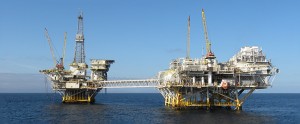The Bureau of Ocean Energy Management (BOEM) and the Minerals Management Service before it have ranked the Santa Barbara, Santa Maria, and Oceanside basins (not necessarily in that order) as the best prospects for future oil and gas discovery and development in the Pacific Federal offshore. All basins to the north and the distal basins of the Southern California Borderland have either economic or political constraints that rule out future leasing and exploration.
However, the discovery history shows that for Santa Barbara and Santa Maria basins (and San Pedro as well), the “easy oil” has been found (except for one untested prospect). In fact, all production is from the first one or two lease sale offerings in each respective area, and almost all is from the first offering. The exception is a prospect within the Federal ecological preserve that surrounds Santa Barbara Harbor. It is on trend with the Dos Cuadras and Carpinteria fields to the east and may have recoverable resources on the order of 100 MMbbl.
Because of this, continued leasing efforts and exploration are unlikely to result in additional economically recoverable resources for the Santa Barbara offshore basin. In Santa Maria basin, the only resources of interest for future leasing are within those leases that were bought back by the Federal government following lawsuits by the State and oil companies that were unable to develop their discovered resources. Those leases are believed to contain about 1 billion barrels of recoverable oil, and would therefore be of interest to companies that are willing to fight the inevitable anti-oil efforts by environmental and other groups.
The last best hope, then, is the yet unexplored Oceanside basin. Because it is on trend with the Los Angeles basin major oilfields, and has many mapped and sizeable prospects, it has long been of interest to government geologists. Efforts in the 1980’s to include it in lease offerings were unsuccessful, primarily because of opposition by the U.S. military, which has operations offshore of Camp Pendleton Marine base in northern San Diego County. As the population of San Diego County has greatly increased since that time, it is almost certain that there will be enormous political opposition to any proposed leasing in the Oceanside basin. Is it any wonder that BOEM has tacitly written off oil and gas for the Pacific Region?
For a copy of the complete presentation given at the Pacific Section AAPG Convention, contact Ken at kp at kineticpotentialenergy.com
Share this